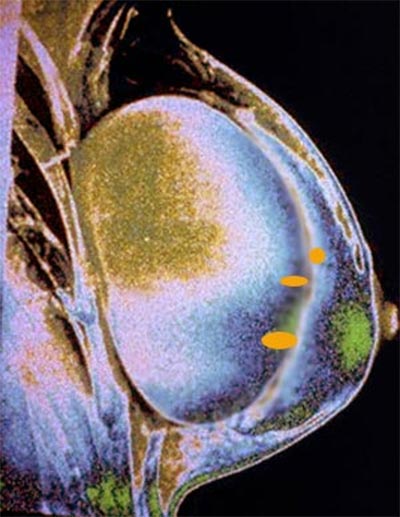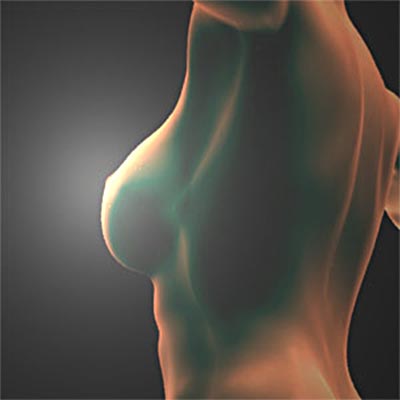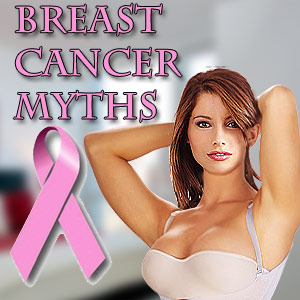Breast Cysts

Breast Cysts are fluid-filled sacs that are common in women in the age group 40 - 60 years. Women face considerable trepidation when these fluid- filled pockets are noticed with a mammogram. We carry an informative guide on Breast Cysts - to understand this condition and the diagnostic and treatment procedures. Breast fibrocystic disease is also discussed.
Breast Cyst Facts
- Cysts move easily to the touch and are hard and round. They are not attached to the breast tissue around them.
- Most Breast Cysts are benign.
- Self breast examination is an effective way to discover Breast Cysts.
- Cysts are known to recur in some of the cases. Some women get cysts several times during their life, usually between the ages of 25 and 45.
- Breast Cysts become tender just before a menstrual period.
- Breast Cysts constitute nearly 15% of all discrete breast masses
- Nearly 7% of women develop Breast Cysts.
Cysts in the breast are formed when milk-producing glands are enlarged. Breast Cysts usually appear in the upper half of the breast and are noticed in women over the age of 35. Presence of cysts is also seen in women who are on hormone replacement therapy (HRT). Most instances of cysts are noticed in pre-menopausal women. Breast Cysts vary in size and can change in size depending on the menstrual cycle.
Imbalance between normal production and absorption of fluid is seen as a cause for cysts. They are seen to increase in size prior to the menstrual period and may feel tender. Cysts can appear by themselves or in groups scattered throughout the breast. The glands and ducts of the breast secrete fluid even when not in a lactating phase. It is when the ducts are plugged with skin cells that fluid build up takes place.
Breast Cyst aspiration
Mammograms reflect cysts as abnormal shadows. The breast ultrasound is the most sensitive and accurate tool for diagnosing Breast Cysts. Once cysts are detected in the breast, the doctor will confirm the nature of the lump with Triple Diagnosis method -- combination of Clinical Breast Examination, Mammography and Fine Needle Aspiration Biopsy. This has to be conducted in a clinic. The process of aspiration is used for diagnosis and removal of cyst.
A specialist draws out the fluid collected within the cyst with a fine needle and syringe. When traces of blood are noticed in the fluid that is drawn from the Breast Cyst, it must be sent to the laboratory for analysis. Normal cystic fluid is yellow, gray or green. If no fluid is obtained from the lump, it has to be investigated further.
The possibility of intra-cystic carcinoma has to checked for. A biopsy might also be done on the breast mass. While benign cysts are round or oval, malignant ones are irregularly shaped and display micro-nodular groups of fluid collection.
Fibrocystic Breast disease
A fibrocystic condition is said to exist when the milk ducts and glands are covered with fibrous tissue. Fibrocystic changes reflect as thickened areas of breast glands and supporting fibrous tissue. Fibrocystic breast changes are associated with the changes of the breast tissue to the monthly cycle.
The levels of estrogen and progesterone change during the menstrual cycle and this hormonal stimulation can cause the milk glands to enlarge and retain water. This makes the breast feel swollen and tender and lumpy. The repeated hormonal stimulation causes fluid accumulation in the form of cysts to obstruct and enlarge the milk ducts.
The pain may manifest as heaviness or dull ache or even burning sensation. This condition manifests as small, nodular cysts and non-cancerous lumpiness. Fibrocystic breast disease is a non -cancerous condition and occurs in women in the childbearing years. This condition is also known as 'lumpy breasts'.
These lumps may not be easy to distinguish from cancerous tumors in the initial stages. The pain is worse before the menstrual period. Those with diets high in caffeine, tea and chocolates are associated with higher incidence of fibrocystic breast disease.
Top of the Page: Breast Cysts
Tags:#breast cyst #fibrocystic breast disease #painful breast cysts #breast cysts symptoms #benign breast cysts

Cancer Staging and Grading
Mammogram - Breast Xray
Breast Ultrasound
Breast MRI
Breast Augmentation
More on Breast cancer

Stress and Breast Cancer
Breast Density and Breast Cancer Risk
Lower your Breast Cancer Risk
Breast Cancer Myths
Mastitis
Breast Cancer Awareness
Preventing Breast Cancer
Breast Self Exam
Breast Cancer Chemotherapy Treatment
Palpable Breast Mass
Breast Cyst
Breast Cancer Symptoms
Breast Calcification
Breast Cancer Treatment
Mastectomy
Top of the Page: Breast Cysts
Popularity Index: 101,356

